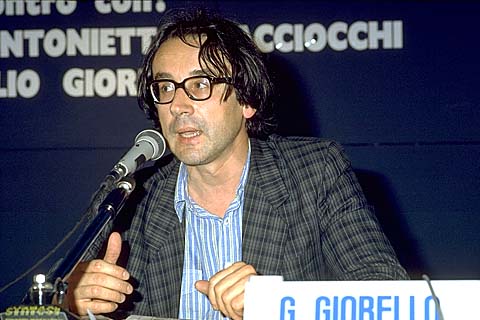From Democritus to quarks. The great intuitions of physics
‘The exhibition intends shedding light on the fundamental steps taken by mankind to try and understand the structure and physical laws on which the world and Universe are based. The first great ‘intuition’ dates back to the Greek “atomists” of the 5th century B.C.. Leucippus and Democritus, who were the first to suggest that matter consists of atoms that move in an infinite vacuum. After making reference to our classical heritage and to the traditions that consolidated in the Greek-Roman period, the exhibition goes on to focus on the Middle-ages, wrongly considered as the “dark” age. Lots of new ideas did in fact blossom in this period, especially in the field of the “fall of gravity” which still considered valid the “natural place” physics of Aristotle (bodies are made of earth and therefore, when freed, fall towards the ground, their natural place). A section of the exhibition will be dedicated to the physics and cosmology of the Middle-ages, presenting this often over-ignored period of history under a new light, from a scientific viewpoint. Physics, like experimental science, developed above all between the 16th and 17th centuries. Copernicus, Kepler, Galileo, Descartes, Newton, Leibniz, had the greatest intuitions in the field of physics as regards the dynamics of the solar system, universal gravitation, the concept of inertia. After the tremendous success of Newton’s mechanical description of the Universe, the scientists of the 18th century associated the electrical interactions between charged bodies with mechanical forces. Electromagnetism was born and developed thanks to Franklin, Priestley, Coulomb, Volta, Galvani. Another crucial step was the study and consequences of the movement of electrical charges and of electromagnetism: Oersted, Faraday, Ampère, right up to Maxwell’s great synthesis. But the most important steps towards the formulation of physical theories able to provide increasingly more refined and detailed descriptions of physical phenomena took place in the 20th century, with the discovery of radioactivity, the development of quantum mechanics and relativity and with the application of these to the study of the structure of matter. The 20th-century “milestones” are called Bohr, Schrödinger, Dirac, Einstein, Fermi, Heisenberg, Pauli, Gellmann and many others. As far as atomism is concerned and especially the structure of matter, the important traditions will not be forgotten that germinated in India and Iran, as well as Arab mediation which not only fostered the transmission of scientific culture from East to West, but which, in many cases, takes on the character of a strongly original revision. This exhibition does not wish to restrict its scope to the simple listing of famous names and discoveries but, through these, intends rebuilding history, from the far-away world of the Greeks right up to the most recent physical theories, highlighting how the process was not continuous, but rather consisted of “long jumps” and “great intuitions”. The exhibition will also include a series of scientific instruments, models, interactive sections and video-projections. The equipment will be specially made and obtained on loan from the CERN.’






